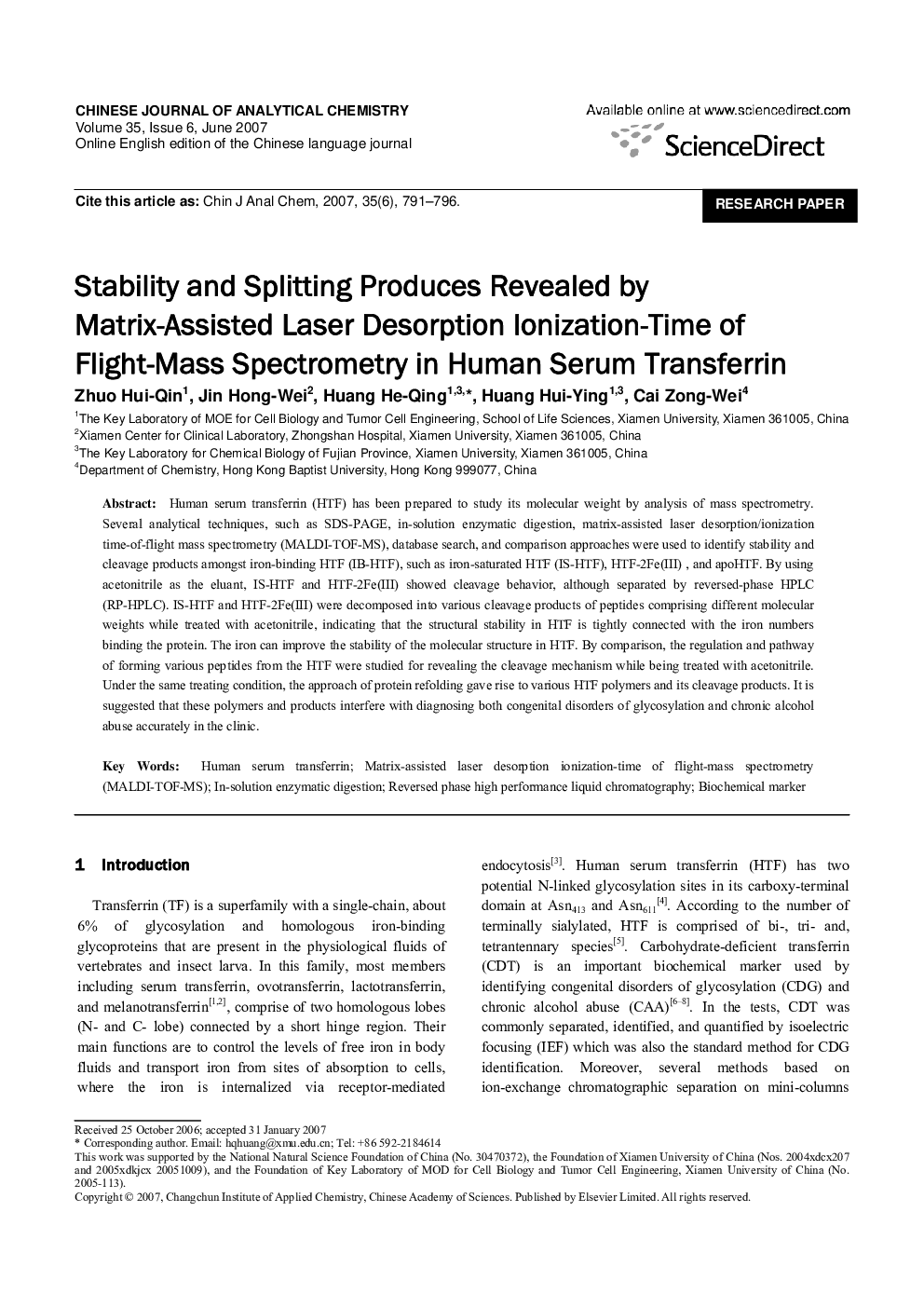| Article ID | Journal | Published Year | Pages | File Type |
|---|---|---|---|---|
| 1183018 | Chinese Journal of Analytical Chemistry | 2007 | 6 Pages |
Human serum transferrin (HTF) has been prepared to study its molecular weight by analysis of mass spectrometry. Several analytical techniques, such as SDS-PAGE, in-solution enzymatic digestion, matrix-assisted laser desorption/ionization time-of-flight mass spectrometry (MALDI-TOF-MS), database search, and comparison approaches were used to identify stability and cleavage products amongst iron-binding HTF (IB-HTF), such as iron-saturated HTF (IS-HTF), HTF-2Fe(III), and apoHTF. By using acetonitrile as the eluant, IS-HTF and HTF-2Fe(III) showed cleavage behavior, although separated by reversed-phase HPLC (RP-HPLC). IS-HTF and HTF-2Fe(III) were decomposed into various cleavage products of peptides comprising different molecular weights while treated with acetonitrile, indicating that the structural stability in HTF is tightly connected with the iron numbers binding the protein. The iron can improve the stability of the molecular structure in HTF. By comparison, the regulation and pathway of forming various peptides from the HTF were studied for revealing the cleavage mechanism while being treated with acetonitrile. Under the same treating condition, the approach of protein refolding gave rise to various HTF polymers and its cleavage products. It is suggested that these polymers and products interfere with diagnosing both congenital disorders of glycosylation and chronic alcohol abuse accurately in the clinic.
